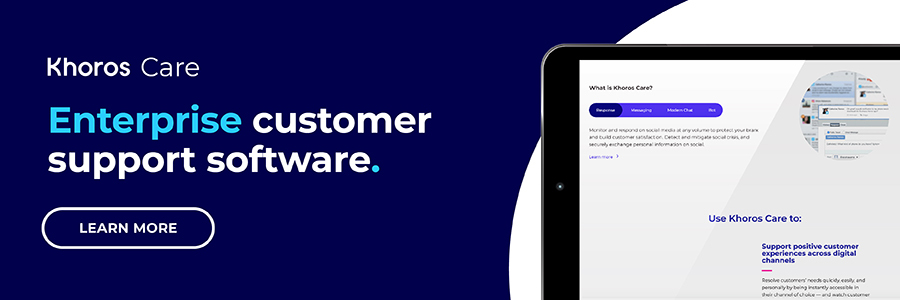 Logo
Logo
EXPERT INSIGHTS
Jun-11-2019
5 Generation Z Statistics on Spending Habits That Marketers Need to Know
Jaime Netzer
Gen Z’s buying power is already undeniable, and marketers who want to remain relevant and capitalize on this nascent market must understand Gen Z’s consumer behavior and spending habits to better serve their unique needs.
Gen Z (also known as “zoomers”), refers to those born from 1997-2012 and accounts for 40% of global consumer shopping with $143 billion in buying power, up from $44 billion in 2017. This is especially impressive considering a large portion of Gen Z hasn’t reached their prime working years yet — which Morgan Stanley projects will start in 2022 and continue until the late 2030s. That isn’t to say younger Gen Z’ers don’t have influence, as 93% of parents say their Gen Z kids affect their buying decisions.
Gen Z’s consumer behavior already has a huge influence on the global economy, and it will continue growing as more start working. To help your brand speak and connect with this audience, we’ve collected a few of the most important statistics on Gen Z’s spending habits.
Gen Z accounts for 40% of global consumers
Gen Z and Millennials have different consumer behavior
Before diving into Gen Z buying habits, it’s important to understand how they differ from Millennials. Though it may be tempting to lump Gen Z and Millennials together, these generations have unique consumer behaviors, driven by different cultural and technological environments. While Millennials were the first generation to grow up having access to the internet, Gen Z was born into an inexorably connected digital world.
For example, an important Gen Z characteristic to note is that they’re almost always online, significantly more than other generations including Millennials. In fact, a study by Adobe found that on average Gen Z spends 10.6 hours online each day, compared to 8.5 hours for Millennials. Marketers wondering how to speak to Gen Z need to find ways to connect with them online, which means catering to their unique preferences. To learn which preferences Gen Z, and many other online demographics share, check out our in-depth Forrester Report: Getting to Know Your Customers.
Though they’re not so distant age-wise from the generation currently cornering the market — Millennials — Gen Z’s spending habits are different and marketers should be aware. Beyond spending more time online, Gen Z also trusts brands less. In fact, a Salesforce study found that 50% of Millennials trust companies compared to only 42% of Gen Z’ers. Brands that want to engage with Gen Z need to take extra steps to build consumer trust.

Now that you have some background info on Gen Z consumer behavior and how it differs from the habits of Millennials, here are some notable statistics and insights to help shape your marketing strategy for this generation:
1. Gen Z uses smart devices for on-the-spot research
47% of U.S. Gen Z consumers research items on mobile devices while shopping at brick-and-mortar locations
(Source: Retail Touchpoints)
According to research by Snapchat, smartphones are the primary way Gen Z accesses the web. 97% of this group owns a smartphone (globally) and 78% says their mobile device is their most important device for going online. Furthermore, the age of smartphone ownership continues to go down — with most children owning a smartphone by age 10 compared to age 12 back in 2012. ome kids receive their first smartphone as early as age seven.
Smartphones are essential to Gen Z’s lifestyle, with 63% saying it would be extremely difficult to live without one and data suggesting most Gen Z’ers check their phone every three minutes. These devices are practically joined at the hip of every Gen Z’er from an early age, which has a drastic impact on their shopping habits.
Gen Z uses their smartphones and tablets as research tools both before they set foot in a brick-and-mortar store and while inside it. So what do they research? 53% of Gen Z uses their smartphone to check online for other items they prefer that are not available in the store where they are; 52% compare the retail price with competitors; and 51% search the web for a coupon, discount, or promotion.
Marketers should note Gen Z’s emphasis on research, as they need to offer shoppers detailed information about products and services through digital channels as well as physical ones. Brands need to provide information across multiple channels to meet Gen Z on the ones they use most, which vary by individual. Furthermore, the information needs to be consistent, as Gen Z may use multiple channels for research when shopping online or in-store.
By establishing your website or online resource as an authority, you can guide Gen Z’s shopping habits, cultivate trust, and help the Gen Z demographic ultimately gravitate towards your product, service, blog, and more.
2. Gen Z cares about speed and customer care
60% of Gen Z’ers are more likely than average consumers to hang up if their call isn’t answered in under 45 seconds
(Source: Business Wire)
Because Gen Z’ers were born into the internet age, they expect customer care to be remarkably fast and agile. This is especially true with Gen Z on social media. Consumers are increasingly using social media instead of phone calls to address their customer service needs which means that individualized, timely care will only become more important as Gen Z grows into its buying power.
Gen Z values a fast, fluid customer service response more than other groups, meaning brands need to find a way to seamlessly connect interactions, as consumers hop between channels. For example, a Gen Z customer who raises an issue on Facebook should still be able to get an update on the situation through Twitter.
This is a pain point for brands, as 77% said they struggled to create a cohesive journey across channels and devices. This is especially troubling given that 62% of consumers want to engage with brands across multiple digital channels and 77% of consumers expect brands’ internal teams to communicate so they don’t have to repeat themselves.
This ties back into the previous point that Gen Z folks rely on fast, effective online research to find answers to their issues. By providing a variety of avenues to solve those customer care questions, you can further build trust in your Gen Z consumer base and curry their purchasing power.
Would you like to improve your Gen Z customer support? Learn how Khoros Care can help your brand scale your customer service so you can respond quickly and personally to inquiries that span multiple channels.

3. Gen Z seeks out collaborative, interactive environments
42% percent of Gen Z respondents in a study said they would participate in an online game for a campaign; 43% would write a product review.
(Source: Forbes)
These two numbers tell marketers something important about Gen Z: They’re looking to get involved with brands and even invest their own time and energy into building a brand’s reputation.
Gen Z loves creative campaigns that encourage collaborative engagement, which makes social media the perfect place to connect with this group. Brands should use this as an opportunity to create personalized, interactive experiences that enable consumers to contribute to something that feels larger than themselves. This is one of the reasons why services like Twitch and YouTube Gaming resonate with Gen Z, with Twitch getting 17 billion hours of watch time in 2020 and YouTube Gaming getting 10 billion hours worth — both significantly up from 2019. Gen Z can use these platforms to interact with their favorite streamers, be part of the community, and play interactive games with the streamer and chat.
Streaming has become an extremely lucrative business for gamers and content creators. According to Business of Apps, on average, expert streamers can make between $3,000 to $5,000 each month playing around forty hours a week. That specific number doesn’t include ad revenue, which averages about $250 every 100 subscribers. The revenue comes from the amount of influence streamers have in society. In fact, in 2019 streamer “Ninja” was named to the annual list of Time magazine’s most influential people, with a column written by NFL star JuJu Smith-Schuster describing the streamer’s impact on the world by blending pop-culture and gaming.
Gen Z is spending time and money in these types of interactive channels, making places like Twitch and YouTube Gaming an important battleground for marketers looking to harness Gen Z spending power.
4. Gen Z expects a great user experience
60% of Gen Z shoppers won’t use apps or websites that load slowly or are difficult to navigate.
(Source: Forbes)
Efficiency is the name of the game for Gen Z. In fact, a survey found that nearly half of the Gen Z demographic say that the ability to find things quickly is the most important aspect of shopping for them. Furthermore, 65% of customers said they’ve switched to a different brand because of a poor experience.
At the most basic level, retailers must ensure their online assets run smoothly and provide a judicious layout and functionality that cater to Gen Z’s consumer behavior.
Things need to be easy-to-use, provide sufficient information, and load fast. These practices should extend beyond brand websites and apps — every digital channel should provide a great user experience. Social media already provides a familiar interface that Gen Z knows and loves, which makes it a great option for brands to engage with this audience and provide customer care.
Brands who utilize social media for customer care need to emphasize a fast, personalized response. While Gen Z may spend 10.6 hours a day online, they don’t want to wait that long for brands to resolve their issue. By combining a personalized user experience with a fast and intuitive website, brands can better connect with their Gen Z consumers.
5. Gen Z values authenticity over celebrity
52% of Gen Z trusts influencers for product and brand recommendations, while only 44% trust their favorite celebrities and athletes for similar advice.
(Source: Ion)
A study of 2,000 individuals ages 13-38 suggests Gen Z trusts influencers more than celebrities for product and brand recommendations, indicating a shift in preference for authenticity as these influencers tend to be seen as more relatable. Supporting this notion, the same research also found that authenticity and genuinely caring about their interests was the most important factor for Gen Z and Millennials when deciding whether to follow a figure on social media.
Influencers can be effective spokespeople for brands targeting Gen Z, but they must be speaking from an authentic place that aligns with the brand’s clearly articulated values. If an influencer or celebrity acts as a spokesperson for a product or service that they don’t use or believe in, it can be difficult and dangerous to hide. The information can get out and social media will make it nearly impossible to obscure.
If possible, brands should utilize user-generated-content such as images and videos from real customers, as research shows Gen Z trust brands more if they use images of real customers in their advertising.
Brands trying to market to Gen Z should take notice of these trends, as 88% of Gen Z and Millenials learn about products they’re interested in through social media and 56% have purchased a product after seeing a post from someone they follow.
A dishonest marketing campaign that can be unraveled with research or a quick screenshot can do significant harm to a brand and degrade Gen Z’s trust. It’s easier and safer to be honest with your Gen Z audience. That honesty will build trust and that trust will pay dividends as Gen Z’s spending power grows.
How can marketers use Gen Z’s consumer behavior to connect with them?
By now you’ve probably heard the statistic claiming millennials’ average attention span is only 12 seconds long, but Gen Z has an even shorter 8 second attention span. We’re not talking about a generation of attention-deficient people, writes READY Education, but rather a generation with an “eight-second filter.” Brands don’t have any time to waste in capturing Gen Z’s attention, and once they do, they’ll have to keep it by being responsive and engaging.
Technology like Khoros can help brands reduce their response time on social media and capture performance data to create more relevant social media marketing content — both key to courting the Gen Z market. To learn more about this demographic and others, read our in-depth Forrester Report: Getting to Know Your Customers.
If you’re ready to create the user experience that Gen Z expects, we invite you to schedule a demo and find out how Khoros can help you create customers for life and capitalize on Gen Z’s growing spending power.











